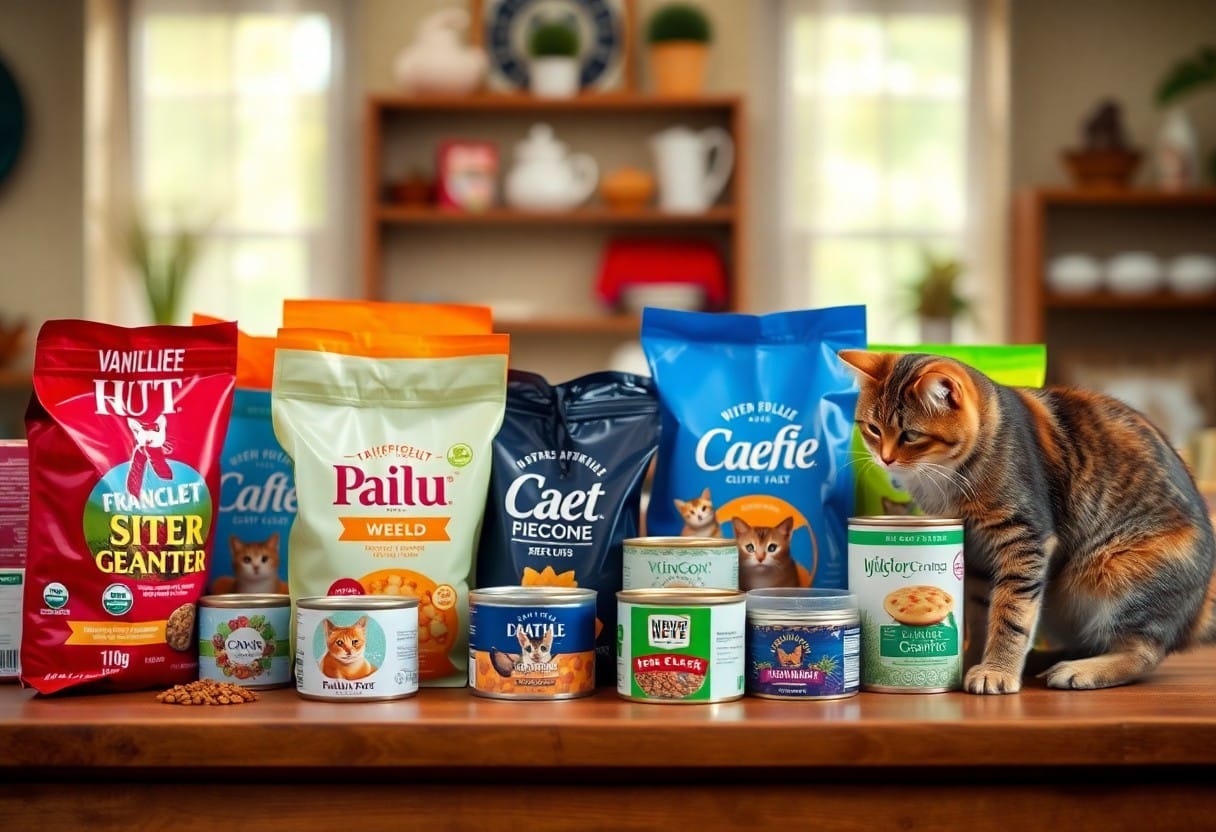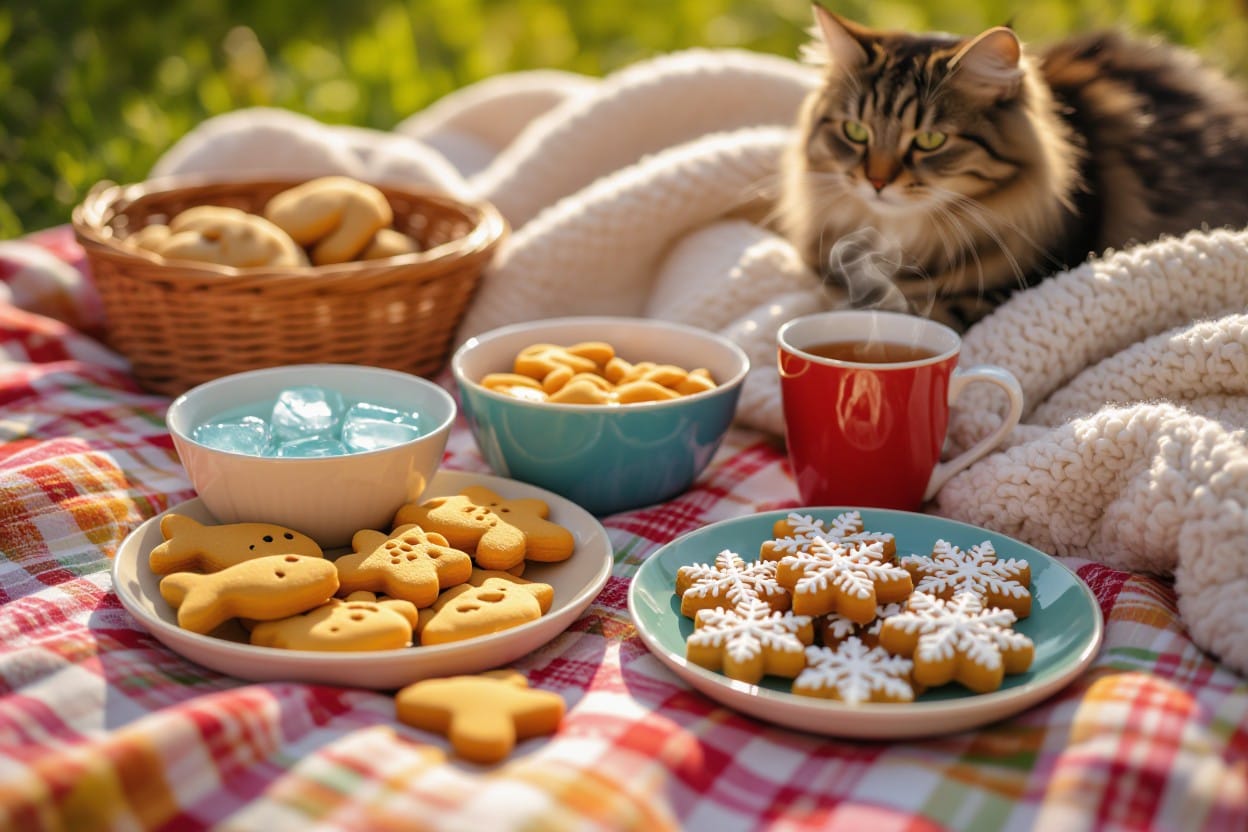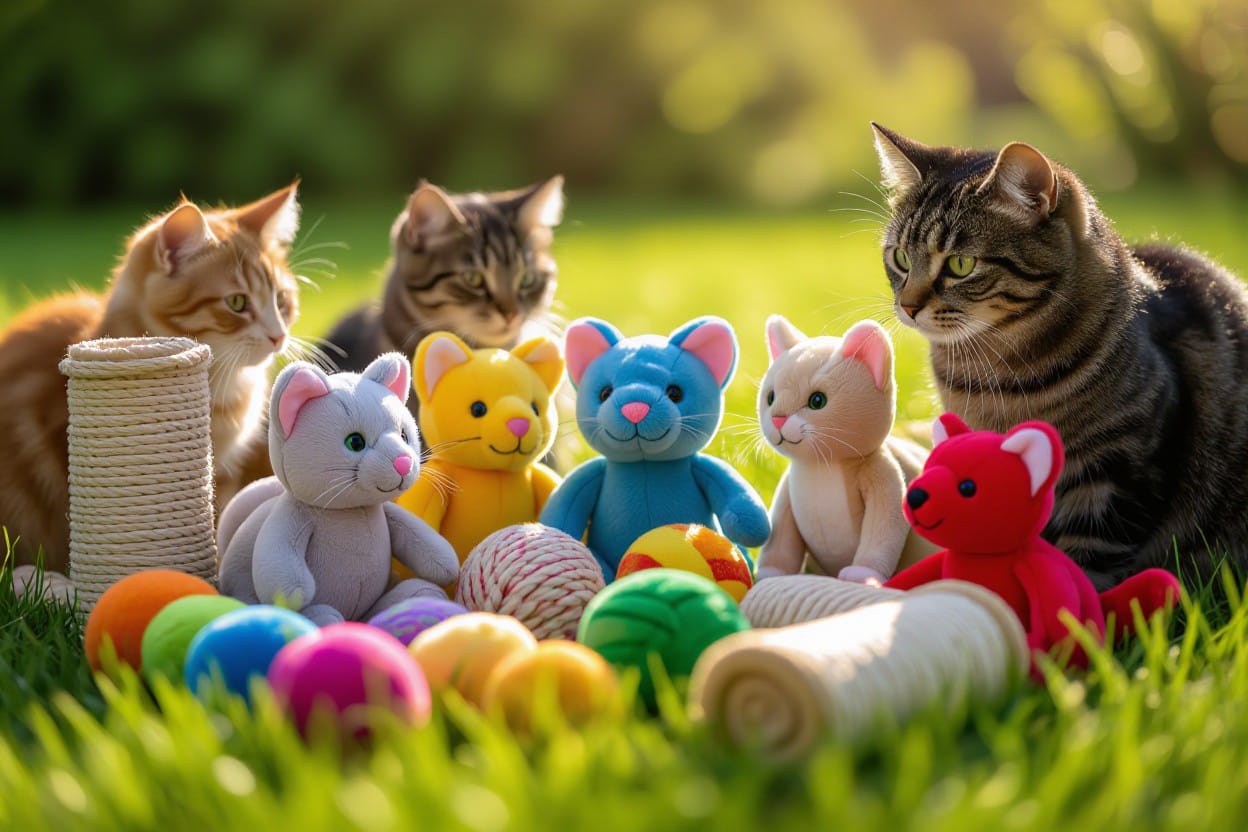
Understanding Cat Food Types
For you to effectively choose the right cat food brand, it’s imperative to understand the different types of cat food available. Here is a breakdown of the main categories:
| Cat Food Type | Description |
| Dry Cat Food | Convenient and long-lasting, often less expensive. |
| Wet Cat Food | High moisture content, more palatable for picky eaters. |
| Grain-Free Options | Designed for cats with grain sensitivities. |
| Specialized Diets | Targeted nutrition for health conditions or life stages. |
| Treats | Used sparingly for training and rewarding. |
Dry Cat Food
Now, dry cat food is a popular choice among cat owners due to its affordability and ease of storage. It typically contains high levels of carbohydrates and is convenient for feeding. However, you should ensure it has adequate protein to support your cat’s health and activity levels.
Wet Cat Food
For many cats, wet cat food is an excellent option because it provides imperative moisture that aids hydration. This type of food is often more appealing to cats due to its aroma and texture, which can encourage even the pickiest eaters to dine.
Food that is rich in protein and moisture is vital for your cat’s overall well-being. Wet cat food can also aid in urinary health due to its high water content. Always check labels for quality ingredients to ensure you’re giving your cat the best nutrition.
Grain-Free Options
Food formulated as grain-free often caters to cats with specific dietary restrictions or allergies to grains. These diets typically consist of higher protein sources, which align more with your cat’s natural dietary needs as obligate carnivores.
To choose a grain-free option, look for choices that still ensure your cat receives proper nutrition from various protein sources. This could support better digestion and overall health, making the food a great choice for sensitive cats.
Specialized Diets
To cater to your cat’s unique health requirements, specialized diets are pivotal. These diets are often prescribed by veterinarians for specific conditions, such as urinary tract health or weight management.
Another option may include food formulated for kittens or senior cats, which provides necessary nutrients tailored to their life stage. Your cat’s health and well-being should always be top of mind when exploring these specialized options.
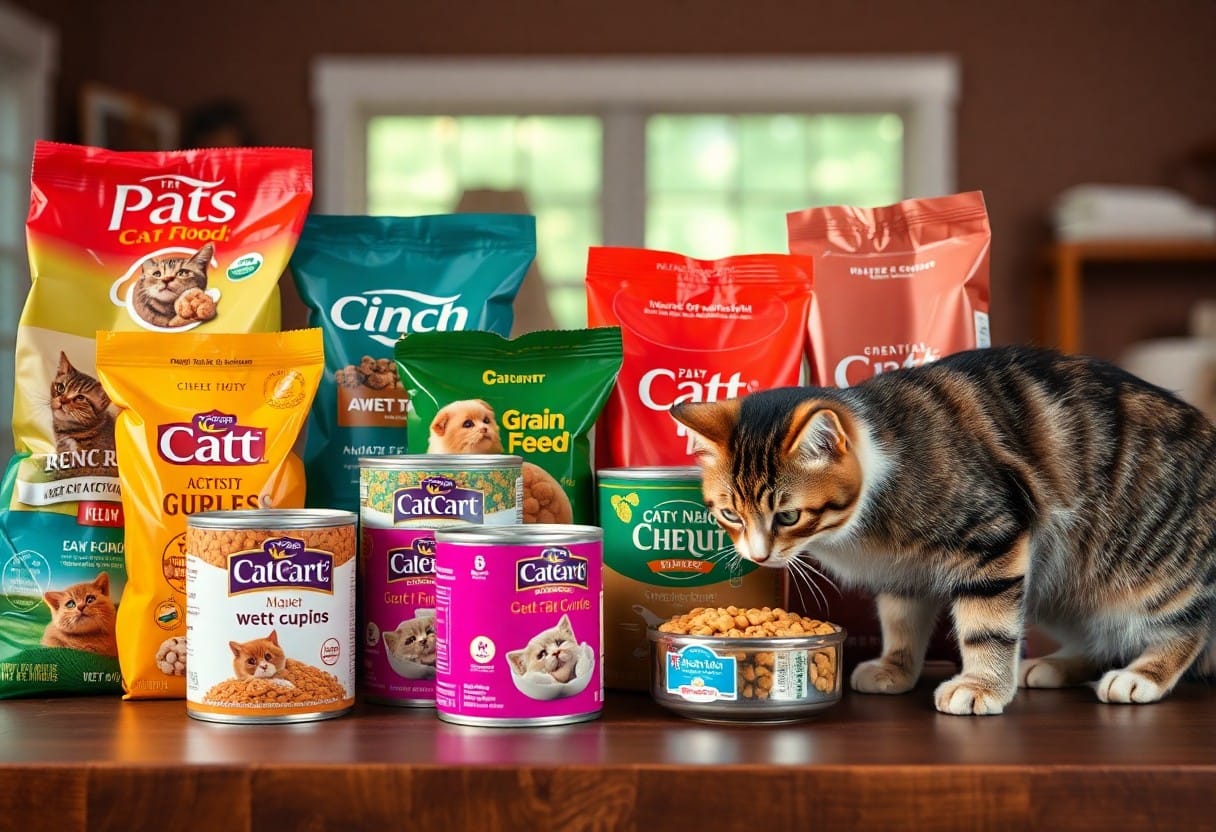
Key Factors to Consider
Unlike many pet owners, it’s vital to evaluate specific factors when selecting a cat food brand. Consider these key factors:
- Ingredient quality
- Protein source
- Adequacy of vitamins and minerals
- Brand reputation
- Price point
After weighing these elements, you will be better prepared to make an informed decision.
Nutritional Needs
Assuming you want the best for your cat, understanding their nutritional needs is vital. Cats require a diet rich in protein, vital fatty acids, and specific vitamins and minerals. When choosing a food brand, ensure the ingredients align with these requirements to promote overall health.
Age and Activity Level
You should consider your cat’s life stage and activity level when selecting food. Kittens need more energy and nutrients compared to adult or senior cats, while less active cats may require a calorie-controlled diet to prevent obesity.
For instance, if you have a playful kitten, opt for food formulated for growing cats, as it typically contains higher protein and calories. Conversely, senior cats or those who are less active would benefit from a diet that supports weight management and contains lower calories, ensuring they maintain a healthy weight.
Health Considerations
One major aspect to keep in mind is your cat’s specific health considerations. Cats with certain conditions like diabetes, allergies, or kidney issues may require specialized diets to maintain their well-being.
Plus, choosing a food that addresses these health issues can dramatically impact your cat’s overall quality of life. Be alert for common dietary triggers for allergies, and consult your veterinarian when in doubt. Providing tailored nutrition can prevent more serious health concerns down the line.
Pros and Cons of Popular Brands
Many people find themselves overwhelmed by the variety of cat food brands available today. Each brand has its own strengths and weaknesses, making it necessary to weigh the pros and cons carefully. Below is a comparative overview to help guide your decision-making process.
| Pros | Cons |
|---|---|
| Quality ingredients | Higher price point |
| Brand reputation | May contain fillers |
| Variety of formulas | Limited availability |
| Vet recommended | Potential allergens |
| Sustainable sourcing | Overwhelming choices |
| Good for specific diets | Not appealing to all cats |
| Positive customer reviews | Risk of recalls |
| Nutritional balance | Misleading marketing |
| Research and innovation | High competition |
Premium Brands
Brands that fall under the premium category often offer high-quality ingredients and exclusive formulations that cater to specific dietary needs. They typically invest in research and development to ensure your cat receives the best nutrition possible. While these brands may be pricier, the benefits often outweigh the cost.
Budget-Friendly Options
Little do many cat owners realize that budget-friendly options can still provide decent nutrition for your feline companion. These brands often focus on affordability while maintaining a balanced diet, making them suitable for owners who may be cost-conscious.
Understanding the various budget-friendly options available allows you to select a brand that meets both your financial needs and your cat’s nutritional requirements. Many of these brands are formulated to meet basic dietary standards, meaning your cat may still enjoy a satisfactory meal without breaking the bank. However, always check ingredient lists to avoid harmful fillers.
Homemade vs. Commercial
Brands of commercial cat food provide convenience and research-backed nutrition, whereas homemade diets can offer personalized meal solutions tailored specifically to your cat’s needs. Each option has its merits, so consider what best fits your lifestyle and your cat’s health.
Popular discussions around homemade vs. commercial cat food often highlight that commercial products are formulated to meet nutritional standards that may be challenging to achieve through homemade meals. While homemade diets can be beneficial for specific health issues, they may lack necessary nutrients necessary for overall health. Always consult with your veterinarian before making significant dietary changes for your cat to ensure its health is not compromised.

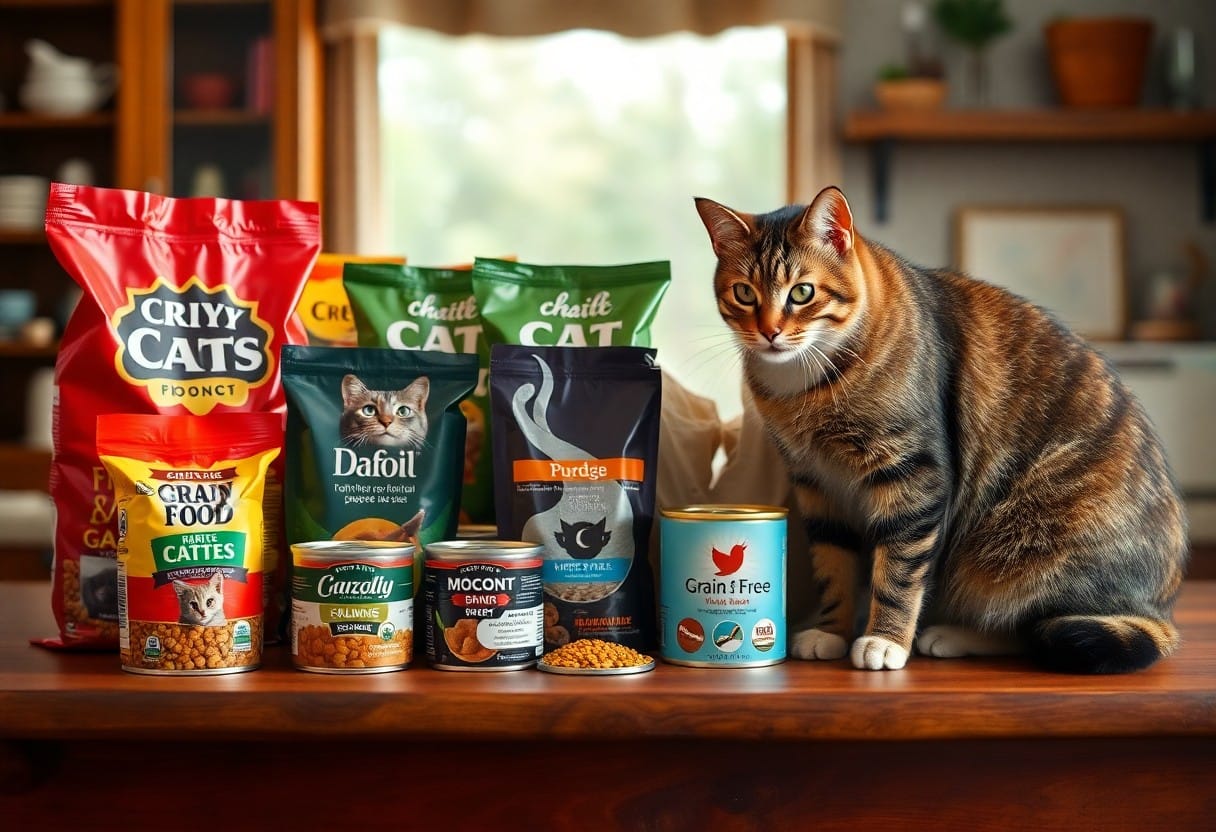
Frequently Asked Questions
To help you navigate your choices in cat food brands, it’s important to address some common questions. You may wonder what ingredients are most important; look for high-quality proteins as the primary component. Beware of fillers like corn and wheat, which provide little nutritional value. Additionally, you might ask about age-appropriate formulas; ensure you select food tailored to your cat’s life stage for optimal health. Always consult with your veterinarian if your cat has any specific health concerns, as they can guide you in making the best dietary decisions for your furry friend.
FAQ
Q: What should I look for on the cat food label when choosing a brand?
A: When examining a cat food label, key elements to consider include the ingredient list, nutritional adequacy statement, and guaranteed analysis. Look for high-quality protein sources as the first ingredient, such as chicken or fish, and ensure that the food meets the standards set by the Association of American Feed Control Officials (AAFCO). Additionally, check the guaranteed analysis for protein, fat, fiber, and moisture content to ensure it aligns with your cat’s dietary needs.
Q: How do I determine if a cat food brand is reputable?
A: Assessing the reputation of a cat food brand involves researching the company’s history, transparency, and customer feedback. Look for brands that have been around for several years and have a good track record for quality and safety. Online reviews and testimonials can provide insights into customer satisfaction, while checking if the company publishes recall histories and ingredient sourcing can indicate their commitment to quality control. Additionally, consider if they have veterinary nutritionists involved in their product development.
Q: Is it advisable to switch cat food brands frequently?
A: Switching cat food brands should be approached with care. While varying a cat’s diet can help prevent food boredom and allergies, abrupt changes can lead to digestive upset. If you decide to switch, do so gradually over a period of 7-10 days, mixing increasing amounts of the new food with the current one. Monitor your cat for any adverse reactions, and consult your veterinarian for personalized advice based on your cat’s health and dietary needs.
